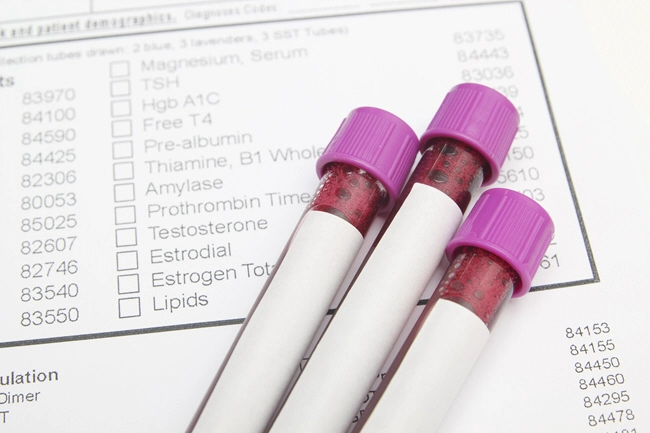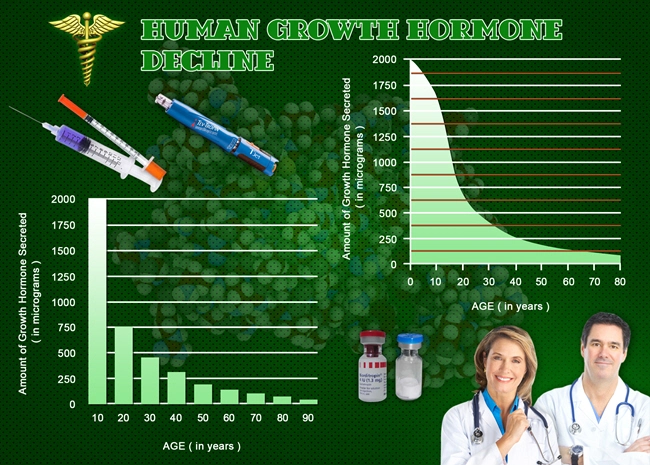
Introduction to Shin Splints
Shin splints, medically known as medial tibial stress syndrome, are a common overuse injury among American male runners. Characterized by pain along the inner edge of the shinbone (tibia), shin splints can significantly hinder athletic performance and quality of life. The prevalence of this condition underscores the importance of preventive measures, which sports medicine has increasingly focused on to support the health and performance of male runners across the United States.
Understanding the Causes
The etiology of shin splints is multifaceted, often involving biomechanical issues, improper training techniques, and inadequate footwear. For American male runners, factors such as sudden increases in training intensity or volume, running on hard surfaces, and muscle imbalances can contribute to the development of this painful condition. Sports medicine professionals emphasize the need for a comprehensive understanding of these causes to effectively tailor preventive strategies.
The Role of Sports Medicine
Sports medicine plays a pivotal role in preventing shin splints through a combination of education, biomechanical analysis, and targeted interventions. American male runners benefit from the expertise of sports medicine specialists who can provide personalized assessments and recommendations. These professionals often employ advanced technologies, such as gait analysis and pressure mapping, to identify biomechanical abnormalities that may predispose individuals to shin splints.
Preventive Strategies and Interventions
One of the cornerstone strategies in preventing shin splints is proper training management. Sports medicine experts advocate for gradual increases in training load, allowing the body to adapt without succumbing to overuse injuries. Additionally, incorporating cross-training activities, such as swimming or cycling, can help maintain cardiovascular fitness while reducing the repetitive stress on the shins.
Footwear selection is another critical aspect of prevention. Sports medicine professionals often recommend shoes with adequate cushioning and support, tailored to the individual's foot type and running style. Custom orthotics may also be prescribed to correct biomechanical issues and redistribute pressure more evenly across the foot.
Strength and conditioning programs are integral to shin splint prevention. Sports medicine specialists design exercises that target the muscles of the lower leg, including the tibialis anterior and posterior, to enhance muscle endurance and support the shinbone. Eccentric strengthening exercises, in particular, have been shown to be effective in reducing the risk of shin splints among American male runners.
Education and Awareness
Education plays a crucial role in the prevention of shin splints. Sports medicine professionals work to raise awareness among American male runners about the importance of listening to their bodies and recognizing early signs of overuse. Workshops and seminars often cover topics such as proper warm-up and cool-down routines, the significance of rest and recovery, and the benefits of maintaining a balanced training regimen.
The Future of Shin Splint Prevention
As sports medicine continues to evolve, so too do the strategies for preventing shin splints. Ongoing research into biomechanics, training methodologies, and injury prevention techniques promises to further enhance the ability of sports medicine professionals to support American male runners. Innovations such as wearable technology and real-time feedback systems may soon play a more significant role in monitoring and adjusting training to prevent shin splints.
Conclusion
The role of sports medicine in preventing shin splints among American male runners is multifaceted and indispensable. Through a combination of education, biomechanical analysis, and targeted interventions, sports medicine professionals are at the forefront of efforts to keep runners healthy and active. As the field continues to advance, the future looks promising for American male runners seeking to enjoy the sport they love without the hindrance of shin splints.
Contact Us Today For A Free Consultation
Dear Patient,
Once you have completing the above contact form, for security purposes and confirmation, please confirm your information by calling us.
Please call now: 1-800-380-5339.
Welcoming You To Our Clinic, Professor Tom Henderson.

- Preventing Ankle Injuries in American Male Volleyball Players: A Comprehensive Guide [Last Updated On: March 14th, 2025] [Originally Added On: March 14th, 2025]
- Rowing and Lower Back Pain: Sports Medicine's Role in Prevention and Treatment [Last Updated On: March 16th, 2025] [Originally Added On: March 16th, 2025]
- Optimizing Recovery for American Male Martial Artists: A Holistic Approach [Last Updated On: March 18th, 2025] [Originally Added On: March 18th, 2025]
- Hamstring Injuries in Sprinters: Diagnosis, Treatment, and Prevention Strategies [Last Updated On: March 18th, 2025] [Originally Added On: March 18th, 2025]
- Surfing Injuries in American Males: Prevention, Treatment, and Performance Enhancement [Last Updated On: March 19th, 2025] [Originally Added On: March 19th, 2025]
- Sports Medicine's Vital Role in Enhancing Triathlete Performance and Health [Last Updated On: March 20th, 2025] [Originally Added On: March 20th, 2025]
- Sports Medicine Revolutionizes Injury Management for American Male Figure Skaters [Last Updated On: March 20th, 2025] [Originally Added On: March 20th, 2025]
- Wrist Injuries in American Male Snowboarders: Epidemiology, Prevention, and Management [Last Updated On: March 20th, 2025] [Originally Added On: March 20th, 2025]
- Sports Medicine's Role in Preventing Overuse Injuries in American Male Climbers [Last Updated On: March 20th, 2025] [Originally Added On: March 20th, 2025]
- Ultimate Frisbee: Knee Health Strategies for American Male Players [Last Updated On: March 21st, 2025] [Originally Added On: March 21st, 2025]
- Sports Medicine Enhances Performance and Health for American Male Polo Players [Last Updated On: March 21st, 2025] [Originally Added On: March 21st, 2025]
- Sports Medicine Enhances Performance and Longevity in American Male Badminton Players [Last Updated On: March 21st, 2025] [Originally Added On: March 21st, 2025]
- Sports Medicine Revolutionizes CrossFit: Enhancing Performance and Health for American Males [Last Updated On: March 22nd, 2025] [Originally Added On: March 22nd, 2025]
- Sports Medicine Benefits for American Male Water Polo Players: Performance, Recovery, Nutrition [Last Updated On: March 22nd, 2025] [Originally Added On: March 22nd, 2025]
- Sports Medicine's Crucial Role in BMX Rider Recovery and Rehabilitation [Last Updated On: March 22nd, 2025] [Originally Added On: March 22nd, 2025]
- Preventing Shoulder Injuries in Lacrosse Goalies: A Sports Medicine Approach [Last Updated On: March 23rd, 2025] [Originally Added On: March 23rd, 2025]
- Sports Medicine's Vital Role in Enhancing Rugby Sevens Performance and Safety [Last Updated On: March 23rd, 2025] [Originally Added On: March 23rd, 2025]
- Preventing Stress Fractures in American Male Runners: Sports Medicine Strategies [Last Updated On: March 23rd, 2025] [Originally Added On: March 23rd, 2025]
- Tendonitis in American Male Tennis Players: Diagnosis, Treatment, and Prevention Strategies [Last Updated On: March 23rd, 2025] [Originally Added On: March 23rd, 2025]
- Rotator Cuff Injuries in American Male Swimmers: Diagnosis, Treatment, and Prevention [Last Updated On: March 24th, 2025] [Originally Added On: March 24th, 2025]
- Optimizing Recovery for Male Wide Receivers: Sports Medicine Strategies [Last Updated On: March 24th, 2025] [Originally Added On: March 24th, 2025]
- Sports Medicine Revolutionizes Training for American Male Handball Athletes [Last Updated On: March 24th, 2025] [Originally Added On: March 24th, 2025]
- Sports Medicine's Role in Enhancing American Male Fencers' Performance and Health [Last Updated On: March 24th, 2025] [Originally Added On: March 24th, 2025]
- Hip Issues in American Male Track Cyclists: Sports Medicine's Role and Innovations [Last Updated On: March 24th, 2025] [Originally Added On: March 24th, 2025]
- Preventing Back Injuries in American Male Rowers: A Holistic Sports Medicine Approach [Last Updated On: March 24th, 2025] [Originally Added On: March 24th, 2025]
- Sports Medicine Revolutionizes Injury Management for American Male Swimmers [Last Updated On: March 25th, 2025] [Originally Added On: March 25th, 2025]
- Sports Medicine Benefits for American Male Trampoline Gymnasts: Performance and Health [Last Updated On: March 25th, 2025] [Originally Added On: March 25th, 2025]
- Optimizing Recovery and Performance for American Male Soccer Goalkeepers: A Sports Medicine Approach [Last Updated On: March 25th, 2025] [Originally Added On: March 25th, 2025]
- Sports Medicine Advances Aid Lacrosse Midfielders' Hip Health and Performance [Last Updated On: March 25th, 2025] [Originally Added On: March 25th, 2025]
- Preventing Hamstring Injuries in American Male Soccer Midfielders: Advanced Techniques [Last Updated On: March 25th, 2025] [Originally Added On: March 25th, 2025]
- Sports Medicine's Crucial Role in Recovery for American Male Soccer Defenders [Last Updated On: March 26th, 2025] [Originally Added On: March 26th, 2025]
- Sports Medicine Benefits for American Male Table Tennis Players: Performance and Health [Last Updated On: March 26th, 2025] [Originally Added On: March 26th, 2025]
- Sports Medicine: Enhancing Performance and Health for American Male Track Athletes [Last Updated On: March 26th, 2025] [Originally Added On: March 26th, 2025]
- Sports Medicine's Impact on Recovery Times in American Male Ice Hockey Players [Last Updated On: March 26th, 2025] [Originally Added On: March 26th, 2025]
- Sports Medicine's Impact on Injury Management in American Male Field Hockey [Last Updated On: March 26th, 2025] [Originally Added On: March 26th, 2025]
- Sports Medicine's Role in Enhancing Volleyball Performance and Longevity for American Males [Last Updated On: March 26th, 2025] [Originally Added On: March 26th, 2025]
- Ankle Health Strategies for American Male Beach Volleyball Players [Last Updated On: March 26th, 2025] [Originally Added On: March 26th, 2025]
- Sports Medicine's Vital Role in Enhancing Rugby Forwards' Health and Performance [Last Updated On: March 27th, 2025] [Originally Added On: March 27th, 2025]
- Sports Medicine Revolutionizes Training for American Male Cyclists [Last Updated On: March 27th, 2025] [Originally Added On: March 27th, 2025]
- Cross-Country Skiing: Enhancing Knee Health and Performance in American Males [Last Updated On: March 27th, 2025] [Originally Added On: March 27th, 2025]
- Muscle Health Strategies for American Male Speed Skaters: Enhancing Performance and Longevity [Last Updated On: March 27th, 2025] [Originally Added On: March 27th, 2025]
- Lacrosse Shoulder Injuries: Diagnosis, Treatment, and Prevention Strategies [Last Updated On: March 27th, 2025] [Originally Added On: March 27th, 2025]
- Sports Medicine Advances Extend Careers of American Male Baseball Pitchers [Last Updated On: March 28th, 2025] [Originally Added On: March 28th, 2025]
- Managing Groin Injuries in American Male Hockey Players: A Holistic Approach [Last Updated On: March 28th, 2025] [Originally Added On: March 28th, 2025]
- Sports Medicine Advances Extend Careers of American Male Baseball Outfielders [Last Updated On: March 28th, 2025] [Originally Added On: March 28th, 2025]
- Sports Medicine Strategies to Prevent Achilles Tendon Injuries in American Male Runners [Last Updated On: March 28th, 2025] [Originally Added On: March 28th, 2025]
- Ankle Health Strategies for Basketball Point Guards: Prevention, Care, and Longevity [Last Updated On: March 28th, 2025] [Originally Added On: March 28th, 2025]
- Knee Health Management for Football Running Backs: Prevention, Treatment, Rehabilitation [Last Updated On: March 29th, 2025] [Originally Added On: March 29th, 2025]
- Sports Medicine: Enhancing Performance and Health in Basketball Forwards [Last Updated On: March 30th, 2025] [Originally Added On: March 30th, 2025]
- Sports Medicine Strategies for Recovery in American Male Soccer Forwards [Last Updated On: March 30th, 2025] [Originally Added On: March 30th, 2025]
- Sports Medicine's Impact on American Male Cyclists' Performance and Health [Last Updated On: March 30th, 2025] [Originally Added On: March 30th, 2025]
- Sports Medicine's Comprehensive Role in Enhancing American Male Swimmers' Performance and Recovery [Last Updated On: March 31st, 2025] [Originally Added On: March 31st, 2025]
- Sports Medicine's Role in Enhancing American Male Volleyball Players' Performance and Health [Last Updated On: March 31st, 2025] [Originally Added On: March 31st, 2025]
- Sports Medicine: Enhancing Performance and Health in American Male Track Athletes [Last Updated On: April 2nd, 2025] [Originally Added On: April 2nd, 2025]
- Knee Health Strategies for American Male Cross-Country Skiers [Last Updated On: April 3rd, 2025] [Originally Added On: April 3rd, 2025]
- Sports Medicine: Enhancing Performance and Health for Basketball Forwards [Last Updated On: April 7th, 2025] [Originally Added On: April 7th, 2025]
- Sports Medicine: Enhancing Rugby Forwards' Performance and Health [Last Updated On: April 8th, 2025] [Originally Added On: April 8th, 2025]
- Lacrosse Midfielders' Hip Injuries: Sports Medicine's Role in Recovery and Prevention [Last Updated On: April 8th, 2025] [Originally Added On: April 8th, 2025]
- Managing Groin Injuries in American Male Hockey Players: Diagnosis, Treatment, and Prevention [Last Updated On: April 8th, 2025] [Originally Added On: April 8th, 2025]
- Preventing Hamstring Injuries in American Male Soccer Midfielders: A Sports Medicine Approach [Last Updated On: April 8th, 2025] [Originally Added On: April 8th, 2025]
- Optimizing Recovery for American Male Soccer Forwards: A Holistic Approach [Last Updated On: April 10th, 2025] [Originally Added On: April 10th, 2025]
- Sports Medicine Advances Extend Careers of American Male Baseball Outfielders [Last Updated On: April 11th, 2025] [Originally Added On: April 11th, 2025]
- Sports Medicine's Role in Preventing Achilles Tendon Injuries in American Male Runners [Last Updated On: April 11th, 2025] [Originally Added On: April 11th, 2025]
- Knee Health Strategies for American Football Running Backs: Prevention to Recovery [Last Updated On: April 11th, 2025] [Originally Added On: April 11th, 2025]
- Sports Medicine Advances Enhance Performance, Longevity in American Male Swimmers [Last Updated On: April 13th, 2025] [Originally Added On: April 13th, 2025]
- Sports Medicine Benefits for American Male Track and Field Athletes: Performance and Health [Last Updated On: April 13th, 2025] [Originally Added On: April 13th, 2025]
- Sports Medicine Revolutionizes Training and Health for American Male Cyclists [Last Updated On: April 15th, 2025] [Originally Added On: April 15th, 2025]
- Sports Medicine: Revolutionizing Rugby Forwards' Performance and Health [Last Updated On: April 15th, 2025] [Originally Added On: April 15th, 2025]
- Cross-Country Skiing: Knee Health Risks, Prevention, and Management Strategies [Last Updated On: April 16th, 2025] [Originally Added On: April 16th, 2025]
- Preventing Achilles Tendon Injuries in American Male Runners: A Sports Medicine Approach [Last Updated On: April 17th, 2025] [Originally Added On: April 17th, 2025]
- Sports Medicine Enhances Performance and Longevity in American Male Volleyball Players [Last Updated On: April 18th, 2025] [Originally Added On: April 18th, 2025]
- Sports Medicine Advances Aid Lacrosse Midfielders' Hip Health and Career Longevity [Last Updated On: April 18th, 2025] [Originally Added On: April 18th, 2025]
- Preventing Hamstring Injuries in American Male Soccer Midfielders: A Comprehensive Guide [Last Updated On: April 18th, 2025] [Originally Added On: April 18th, 2025]
- Groin Injuries in Hockey: Diagnosis, Treatment, and Prevention Strategies [Last Updated On: April 18th, 2025] [Originally Added On: April 18th, 2025]
- Optimal Recovery Strategies for American Male Soccer Forwards: A Comprehensive Guide [Last Updated On: April 18th, 2025] [Originally Added On: April 18th, 2025]
- Knee Health Strategies for American Football Running Backs: Prevention to Rehabilitation [Last Updated On: April 19th, 2025] [Originally Added On: April 19th, 2025]
- Sports Medicine: Enhancing Performance and Recovery for Basketball Forwards [Last Updated On: April 19th, 2025] [Originally Added On: April 19th, 2025]









